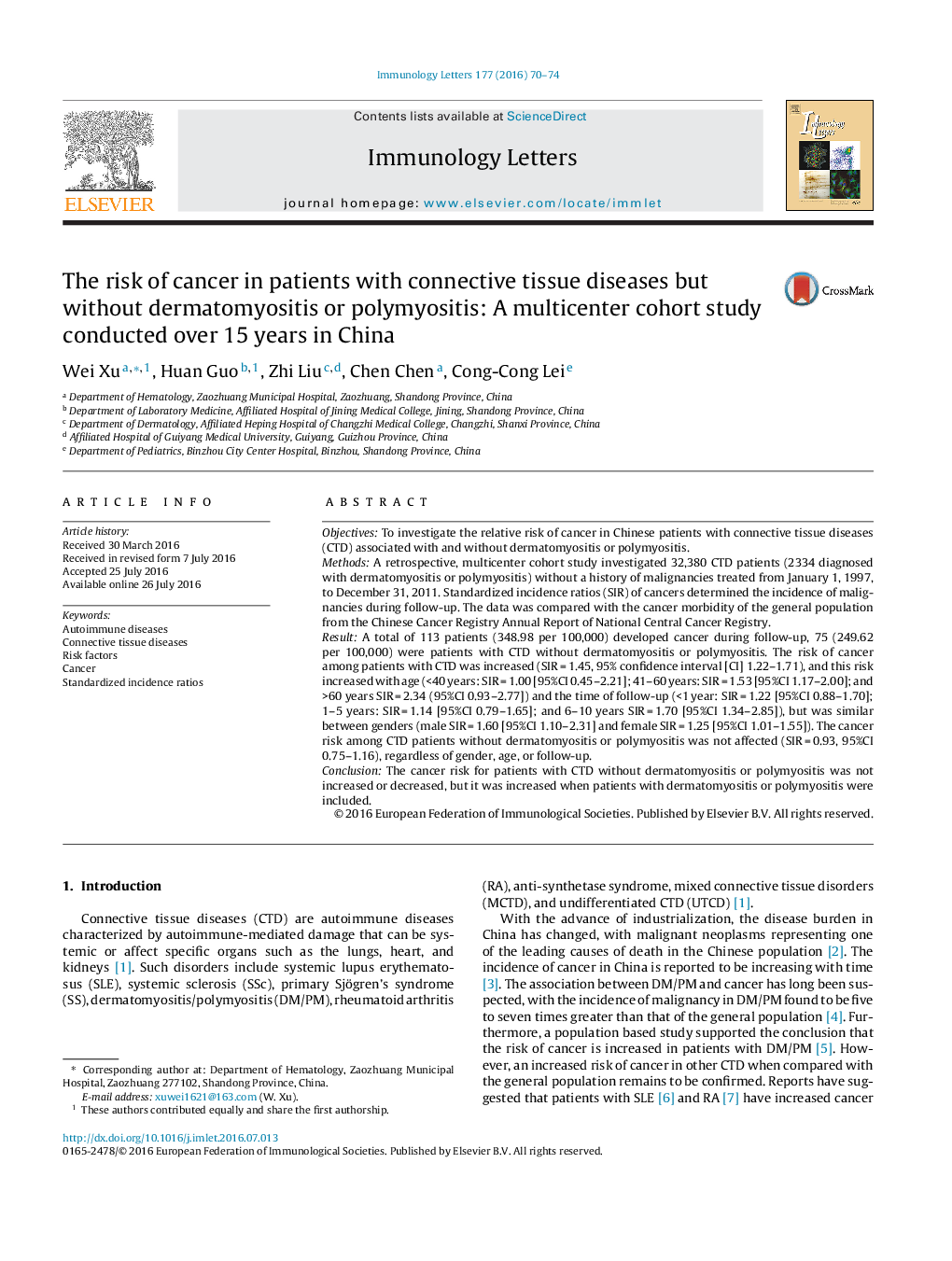| Article ID | Journal | Published Year | Pages | File Type |
|---|---|---|---|---|
| 3355236 | Immunology Letters | 2016 | 5 Pages |
•This was the first large-scale cohort study of cancer and autoimmune disease conducted in the China population.•Patients with autoimmune disease without DM/PM had no increased risk of developing certain cancers when compared with the general population.•This was may be ought to the special environment that China RA patients lived in.
ObjectivesTo investigate the relative risk of cancer in Chinese patients with connective tissue diseases (CTD) associated with and without dermatomyositis or polymyositis.MethodsA retrospective, multicenter cohort study investigated 32,380 CTD patients (2334 diagnosed with dermatomyositis or polymyositis) without a history of malignancies treated from January 1, 1997, to December 31, 2011. Standardized incidence ratios (SIR) of cancers determined the incidence of malignancies during follow-up. The data was compared with the cancer morbidity of the general population from the Chinese Cancer Registry Annual Report of National Central Cancer Registry.ResultA total of 113 patients (348.98 per 100,000) developed cancer during follow-up, 75 (249.62 per 100,000) were patients with CTD without dermatomyositis or polymyositis. The risk of cancer among patients with CTD was increased (SIR = 1.45, 95% confidence interval [CI] 1.22–1.71), and this risk increased with age (<40 years: SIR = 1.00 [95%CI 0.45–2.21]; 41–60 years: SIR = 1.53 [95%CI 1.17–2.00]; and >60 years SIR = 2.34 (95%CI 0.93–2.77]) and the time of follow-up (<1 year: SIR = 1.22 [95%CI 0.88–1.70]; 1–5 years: SIR = 1.14 [95%CI 0.79–1.65]; and 6–10 years SIR = 1.70 [95%CI 1.34–2.85]), but was similar between genders (male SIR = 1.60 [95%CI 1.10–2.31] and female SIR = 1.25 [95%CI 1.01–1.55]). The cancer risk among CTD patients without dermatomyositis or polymyositis was not affected (SIR = 0.93, 95%CI 0.75–1.16), regardless of gender, age, or follow-up.ConclusionThe cancer risk for patients with CTD without dermatomyositis or polymyositis was not increased or decreased, but it was increased when patients with dermatomyositis or polymyositis were included.
